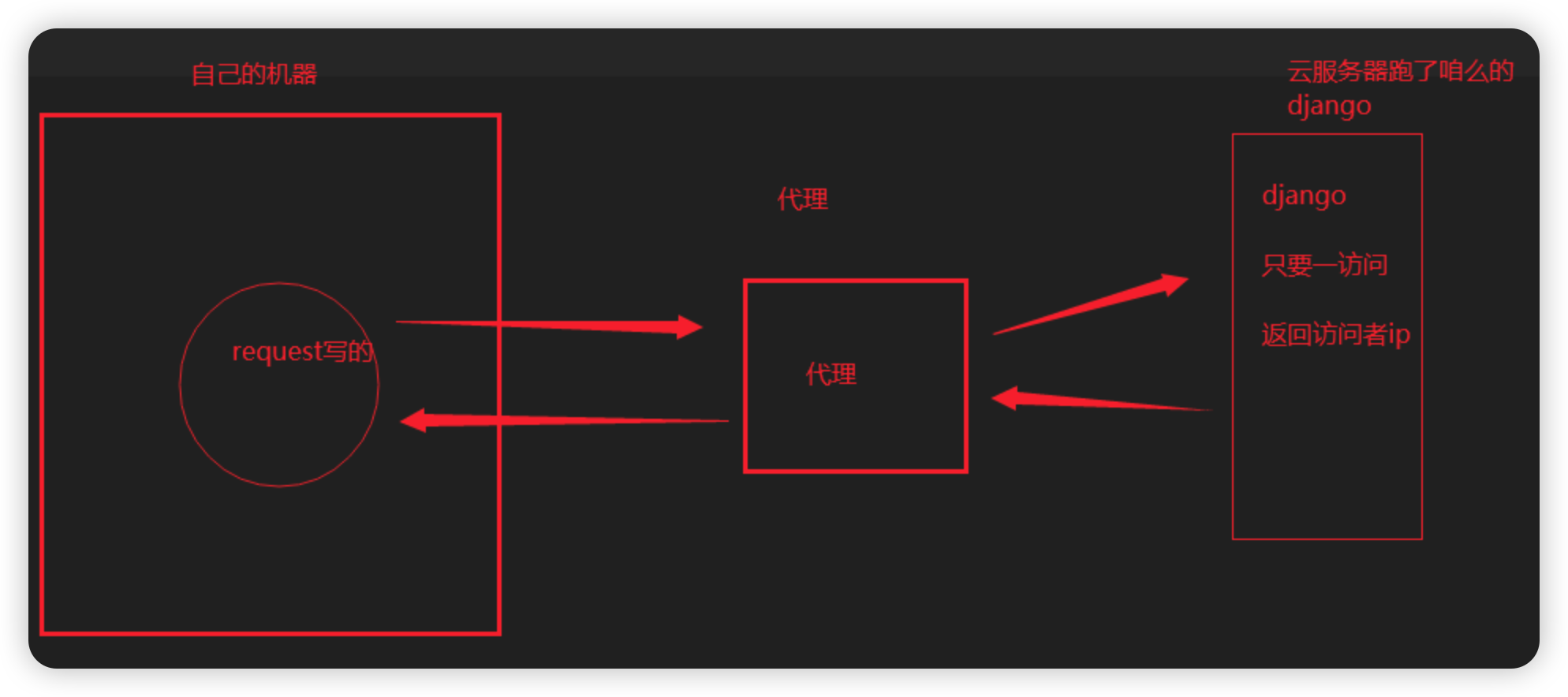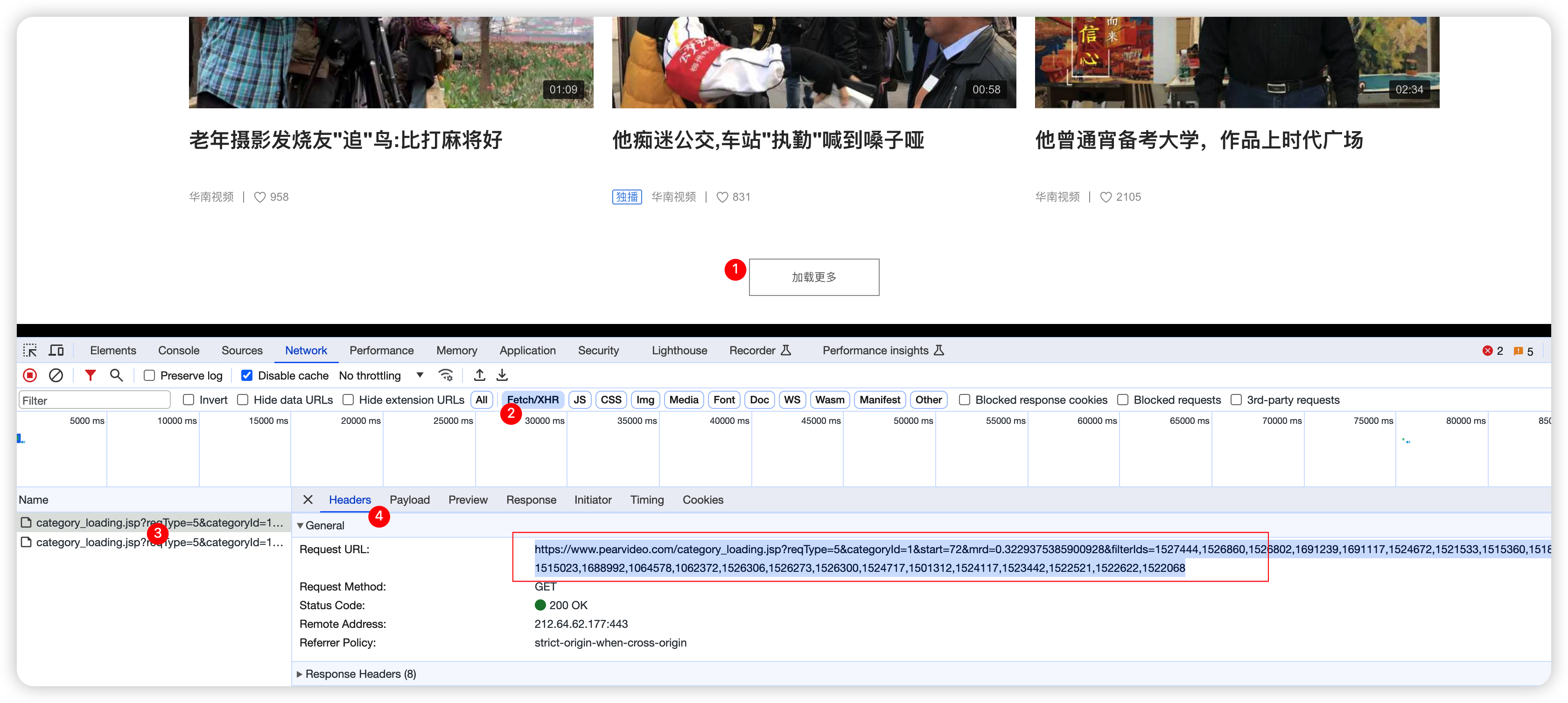爬虫之代理池、爬取视频网站、新闻、bs4
一、代理池搭建
1、频繁爬网站,ip容易被封
1 2 3 4 5 6 7 8 9 10 11 12 13 14 15 16 17 18 19 20 21 22 23 24 25 26 27 28 29 30 31 32 33 34 | # ip代理 -每个设备都会有自己的IP地址 -电脑有ip地址---》访问一个网站---》访问太频繁---》封ip -收费:靠谱稳定--提供api -免费:不稳定--自己写api用 -开源的:https://github.com/jhao104/proxy_pool 免费代理---》爬取免费代理---》验证---》存到redis中 flask搭建web---》访问某个接口,随机获取ip # 搭建步骤: 1 git clone git@github.com:jhao104/proxy_pool.git 2 pycharm中打开 3 安装依赖:创建虚拟环境 pip install -r requirements.txt 4 修改配置文件: DB_CONN = 'redis://127.0.0.1:6379/0' 5 运行调度程序和web程序 # 启动调度程序 python proxyPool.py schedule # 启动webApi服务 python proxyPool.py server 6 api介绍 / GET api介绍 None /get GET 随机获取一个代理 可选参数: ?type=https 过滤支持https的代理 /pop GET 获取并删除一个代理 可选参数: ?type=https 过滤支持https的代理 /all GET 获取所有代理 可选参数: ?type=https 过滤支持https的代理 /count GET 查看代理数量 None /delete GET 删除代理 ?proxy=host:ip # http和https代理 -以后使用http代理访问http的地址 -使用https的代理访问https的地址 |
二、代理池使用
1、
1 2 3 4 5 6 7 8 9 | import requestsres = requests.get('http://192.168.1.252:5010/get/?type=http').json()['proxy']proxies = { 'http': res,}print(proxies)# 我们是http 要使用http的代理respone = requests.get('http://139.155.203.196:8080/', proxies=proxies)print(respone.text) |

1 2 3 4 5 6 7 8 9 10 11 12 13 14 15 | # 步骤: 1 写个django,只要访问,就返回访问者ip 2 部署在公网上---》python manage.py runserver 0.0.0.0:8000 3 本机使用代理测试 import requests res1 = requests.get('http://192.168.1.63:5010/get/?type=http').json() dic = {'http': res1['proxy']} print(dic) res = requests.get('http://47.93.190.59:8000/', proxies=dic) print(res.text) # 补充: 代理有 透明和高匿 透明的意思:使用者最终的ip是能看到的 高匿:隐藏访问者真实ip,服务端看不到 |
三、爬取视频网站
1、爬取🍐视频网站

人物视频:
注意:网站做了两层反扒
反扒一:要带 Referer
反扒二:后端返回的和实际能播放的连接不一致

1 2 3 4 5 6 7 8 9 10 11 12 13 14 15 16 17 18 19 20 21 22 23 24 25 26 27 28 29 30 31 32 | import requestsimport re# 请求地址是:# https://www.pearvideo.com/category_loading.jsp?reqType=5&categoryId=1&start=0res = requests.get('https://www.pearvideo.com/category_loading.jsp?reqType=5&categoryId=1&start=0')# print(res.text)# 解析出视频地址---》正则video_list = re.findall('<a href="(.*?)" class="vervideo-lilink actplay">', res.text)# print(video_list)# ['video_1689068', 'video_1703826', 'video_1632617', 'video_1062589', 'video_1063866', 'video_1539171', 'video_1538827', 'video_1538003', 'video_1537997', 'video_1579690', 'video_1536662', 'video_1536297', 'video_1536351', 'video_1536041', 'video_1535571', 'video_1535535', 'video_1532571', 'video_1697740', 'video_1697711', 'video_1697703', 'video_1697553', 'video_1532975', 'video_1533706', 'video_1533177']for video in video_list: video_id = video.split('_')[-1] url = 'https://www.pearvideo.com/' + video print(url) # 向视频详情发送请求---》解析出页面中mp4视频地址---》直接下载即可 header = { 'Referer': url } res_json = requests.get(f'https://www.pearvideo.com/videoStatus.jsp?contId={video_id}&mrd=0.14435938848299434', headers=header).json() mp4_url = res_json['videoInfo']['videos']['srcUrl'] real_mp4_url = mp4_url.replace(mp4_url.split('/')[-1].split('-')[0], 'cont-%s' % video_id) print(real_mp4_url) # 把视频保存到本地 res_video = requests.get(real_mp4_url) with open('./video/%s.mp4' % video_id, 'wb') as f: for line in res_video.iter_content(1024): f.write(line)# res=requests.get('https://www.pearvideo.com/video_1526860')# print(res.text) |
四、爬取新闻
1、BeautifulSoup用来解析HTML页面
soup = BeautifulSoup(res.text, 'html.parser')
1 2 3 4 5 6 7 8 9 10 11 12 13 14 15 16 17 18 19 20 21 22 23 24 25 26 27 28 29 30 31 32 33 | # 没有一个解析库---》用正则---》解析库--》html/xmlimport requests# pip install BeautifulSoup4from bs4 import BeautifulSoupres = requests.get('https://www.autohome.com.cn/news/1/#liststart')# print(res.text)# 找到页面中所有的类名叫article ul标签soup = BeautifulSoup(res.text, 'html.parser')# bs4的查找ul_list = soup.find_all(class_='article', name='ul') # 所有的类名叫article ul标签print(len(ul_list))# 循环再去没一个中,找出所有lifor ul in ul_list: li_list = ul.find_all(name='li') for li in li_list: h3 = li.find(name='h3') if h3: title = h3.text url = 'https:' + li.find(name='a')['href'] desc = li.find(name='p').text reade_count = li.find(name='em').text img = li.find(name='img')['src'] print(f''' 文章标题:{title} 文章地址:{url} 文章摘要:{desc} 文章阅读数:{reade_count} 文章图片:{img} ''')# 爬5页--->把图片保存到本地--->把打印的数据存储到mysql中--》建个表 |
五、bs4介绍喝遍历文档树
1、 BeautifulSoup 是一个可以从HTML或XML文件中提取数据的Python库,解析库
1 | pip install beautifulsoup4 |
2、 用法
1 2 3 4 5 6 7 8 9 10 11 12 13 14 15 16 17 18 19 20 21 22 23 24 25 26 27 28 29 30 31 32 33 34 35 36 37 38 39 40 41 42 43 44 45 46 47 48 49 50 51 52 53 54 55 56 57 58 59 60 61 | from bs4 import BeautifulSouphtml_doc = """<html><head><title>The Dormouse's story</title></head><body><p class="title"><b>The Dormouse's story</b><span>lqz</span></p><p class="story">Once upon a time there were three little sisters; and their names were<a href="http://example.com/elsie" class="sister" id="link1">Elsie</a>,<a href="http://example.com/lacie" class="sister" id="link2">Lacie</a> and<a href="http://example.com/tillie" class="sister" id="link3">Tillie</a>;and they lived at the bottom of a well.</p><p class="story">...</p>"""soup = BeautifulSoup(html_doc, 'html.parser') # 解析库可以使用 lxml,速度快(必须安装) 可以使用python内置的 html.parser# print(soup.prettify())### 重点:遍历文档树#遍历文档树:即直接通过标签名字选择,特点是选择速度快,但如果存在多个相同的标签则只返回第一个#1、用法 通过 . 遍历# res=soup.html.head.title# res=soup.p# print(res)#2、获取标签的名称# res=soup.html.head.title.name# res=soup.p.name# print(res)#3、获取标签的属性# res=soup.body.a.attrs # 所有属性放到字典中 :{'href': 'http://example.com/elsie', 'class': ['sister'], 'id': 'link1'}# res=soup.body.a.attrs.get('href')# res=soup.body.a.attrs['href']# res=soup.body.a['href']# print(res)#4、获取标签的内容# res=soup.body.a.text #子子孙孙文本内容拼到一起# res=soup.p.text# res=soup.a.string # 这个标签有且只有文本,才取出来,如果有子孙,就是None# res=soup.p.strings# print(list(res))#5、嵌套选择# 下面了解#6、子节点、子孙节点# print(soup.p.contents) #p下所有子节点# print(list(soup.p.children)) #得到一个迭代器,包含p下所有子节点# print(list(soup.p.descendants)) #获取子子孙节点,p下所有的标签都会选择出来#7、父节点、祖先节点# print(soup.a.parent) #获取a标签的父节点# print(list(soup.a.parents) )#找到a标签所有的祖先节点,父亲的父亲,父亲的父亲的父亲...#8、兄弟节点# print(soup.a.next_sibling) #下一个兄弟# print(soup.a.previous_sibling) #上一个兄弟#print(list(soup.a.next_siblings)) #下面的兄弟们=>生成器对象# print(soup.a.previous_siblings) #上面的兄弟们=>生成器对象 |




